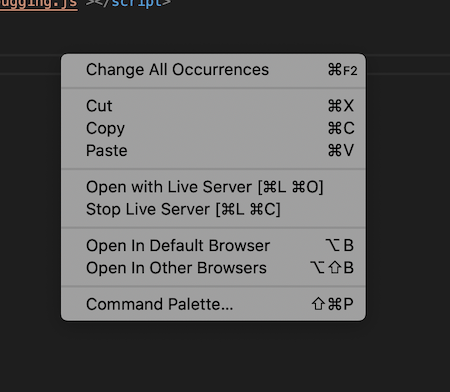So a coding student of mine asked me the other day a deceptively simple question: “I have an HTML file, how do I just get it to show in the browser?” Many of us are so used to kicking off applications within frameworks with commands like rails s or npm start that actually rendering some HTML becomes relatively obscure. Here we’ll cover a few handy ways to do this.
VSCode
If you have Visual Studio Code there are plenty of extensions you can run which will render your HTML file to a browser- two of note are:
- Open in Browser by TechER - once you hit install, right click on your file and you’ll see a ‘Open in Default Browser’ option

- Live Server by Ritwick Dey - this extension gives you a little ‘Go Live’ button down in your tool bar you can use.

Atom
Another popular text editor/IDE Lite, Atom also has a couple of options for packages you can add to your environment:
- open-in-browser by magbicaleman. After install you can navigate to Packages -> Open in Browser

- atom-live-server by jas-chen. This even gives you hot-reloading straight out of the box!

Beyond text editors
Python
What if you don’t want to be tied to a text editor? Python has got you covered here which is handy since it comes out of the box with pretty much every linux/MacOS install.
Check your version of Python (python --version) to see which version you need as things have changed a lot from Python 2 to 3. Navigate in the terminal to where your html file is and enter the following:
Python 2
$ python -m SimpleHTTPServer 8000
Python 3
$ python -m http.server 8000
With both commands we are utilising a little built-in server in Python to serve up our html files, the number is the specific port that we are using in our machine which in this case is 8000. Once you have this running you can navigate to localhost:8000 and you will see your html being displayed in all it’s glory!
Ruby
It may not surprise you that Ruby also has something pretty similar. Again, navigate to the directory where your html file is located and run:
$ ruby -run -e httpd . -p 8000
The syntax is a little less elegant but you can see the -p port argument so you can load it up in localhost:8000
Node.JS
Similar to Python and Ruby, Node.JS has its version as well:
$ npx http-server -p 8000
Again, we can specify the port argument and navigate to localhost:8000 to see our lovely results
So there’s quite a few ways to just render up some HTML locally on your machine - whether you’re testing something or just trying to level up your skills this should give you a few options to try without any frameworks necessary.
